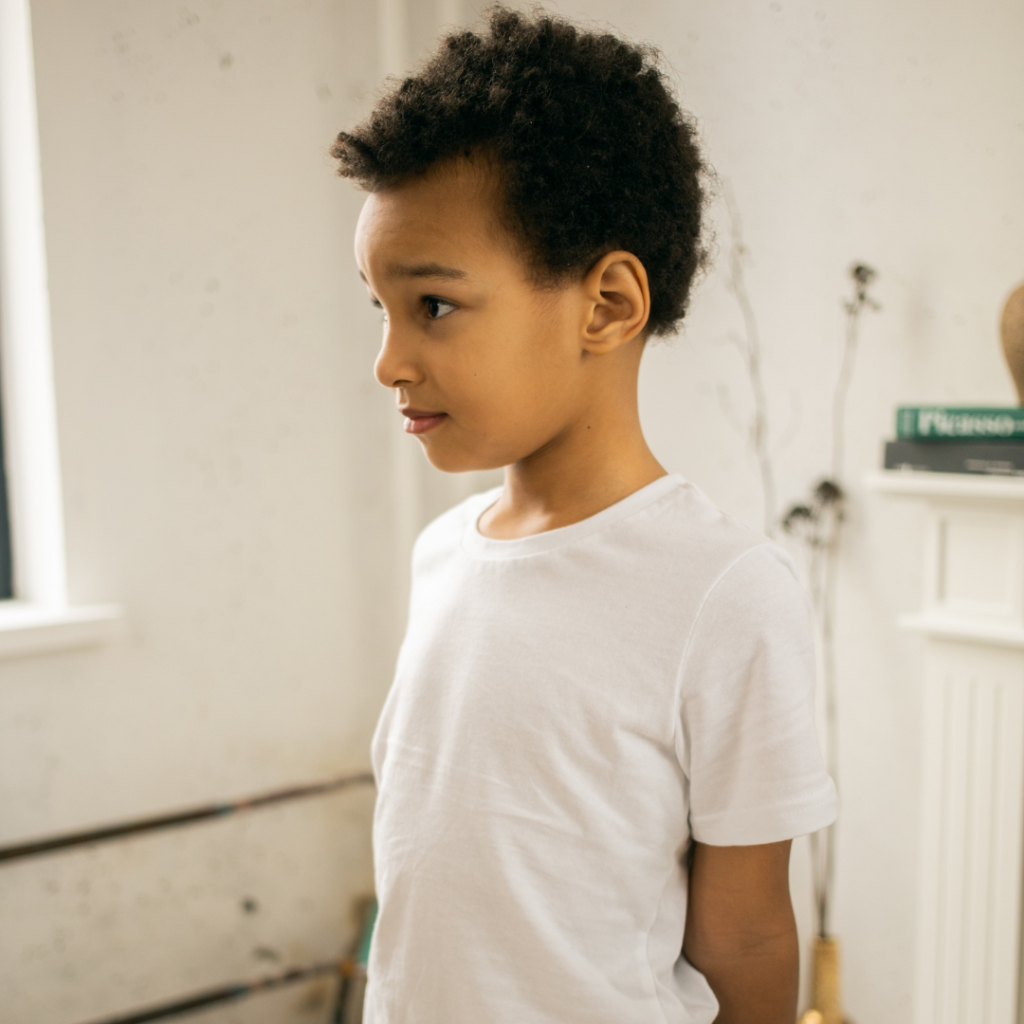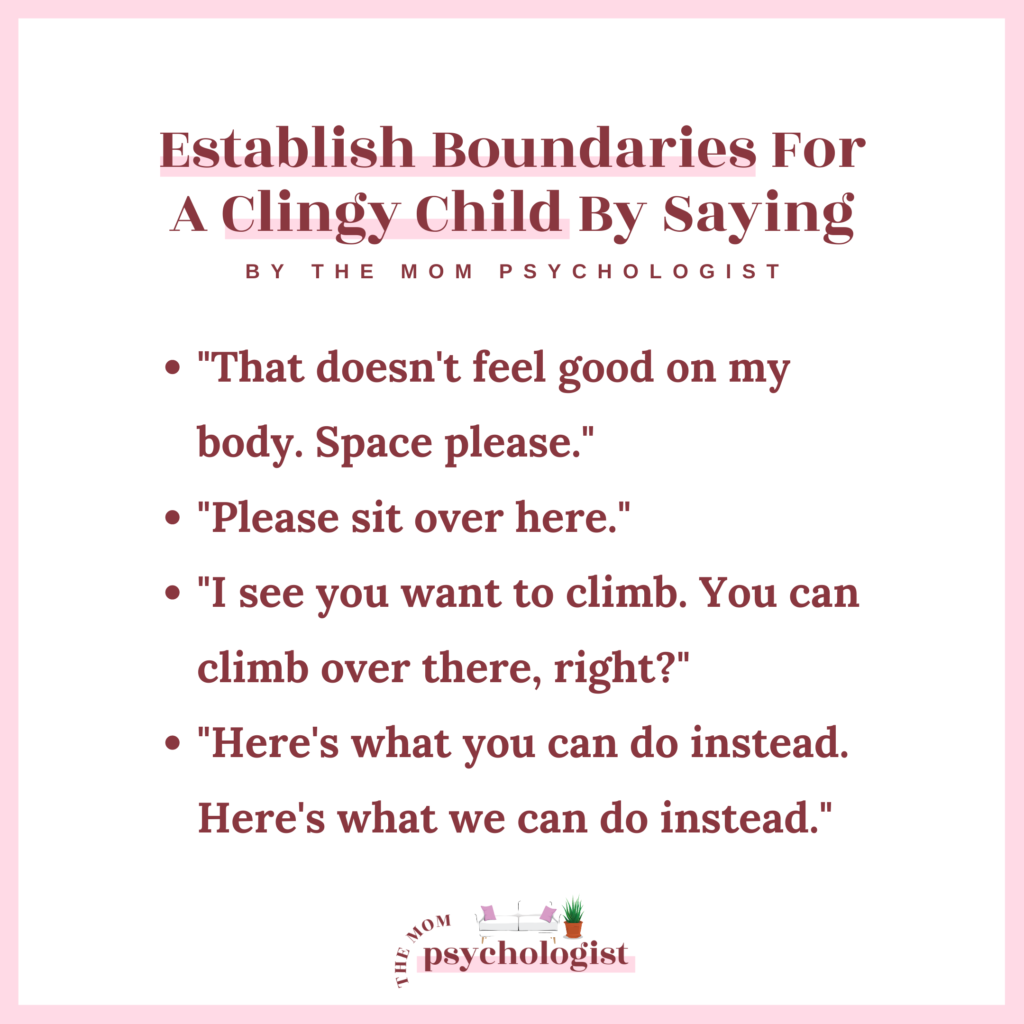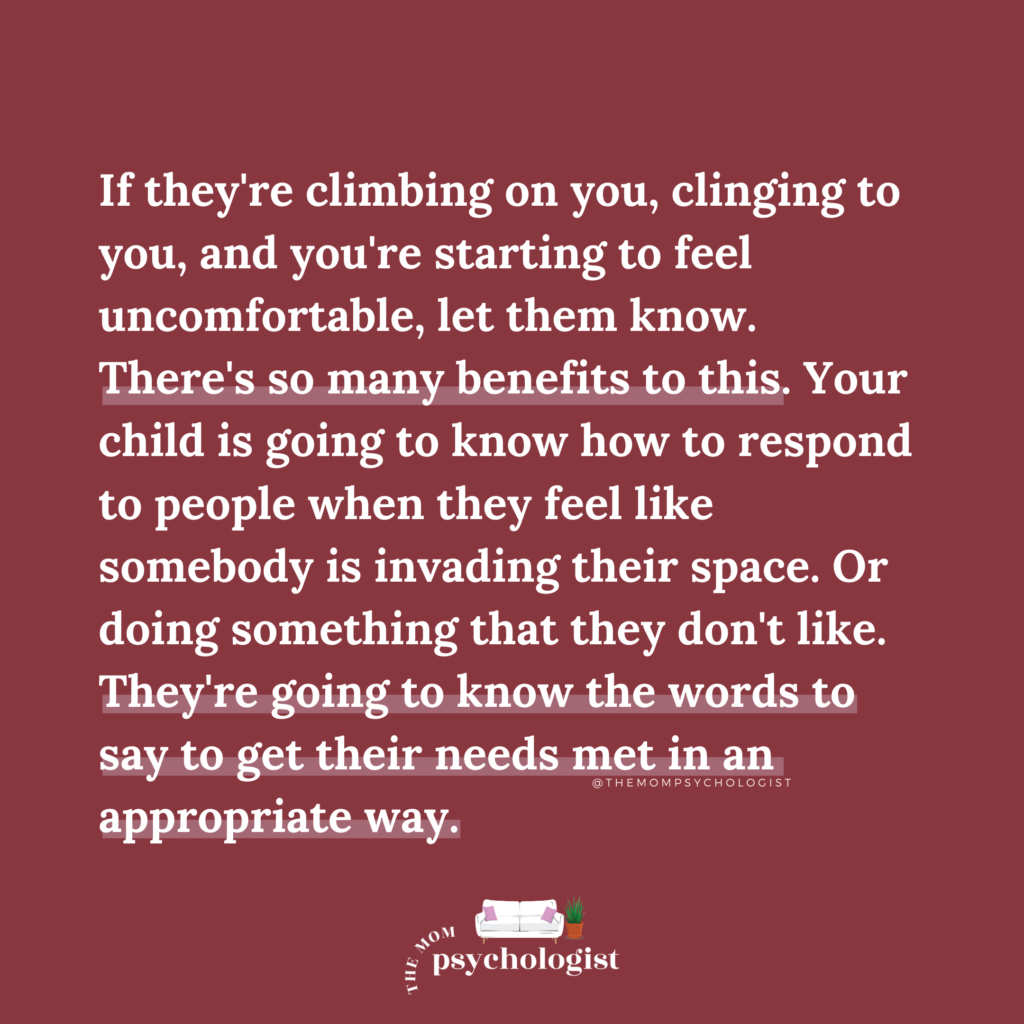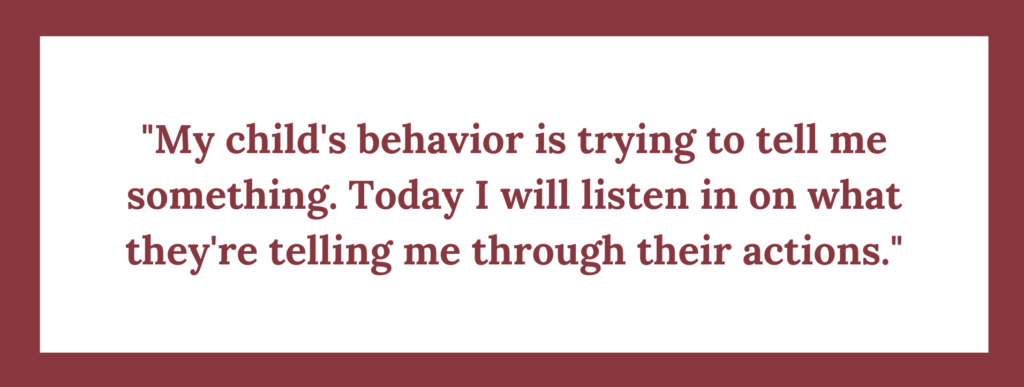watch now!
A place where I discuss all things related to toddlers and motherhood!
Subscribe to my Youtube channel
As a clinical psychologist, published author, and mother to two cheeky young children, I get it. I’ve spent YEARS researching and filtering through the noise online, so you don’t have to.
PARENTING TIPS
POTTY TRAINING
ANTIRACISM
PLAY
Blog Topics
SIBLING RIVALRY
SCREEN TIME
TANTRUMS
DISCIPLINE
Hi I'm Dr. Jazmine
Why Your Child is Clingy and How to Deal With It
topics:
Back when we were hunters and gatherers, children survived when they stayed close to their parents. The children that were far away and separated from the group were more prone to attack and threat.
Your child’s clinginess is rooted in their survival.
But there are some things you can do to turn this behavior around.
4 Reasons Why Your Child Is Clingy
You have to understand what is underlying the clinginess behavior. That is how you will know how you can meet your child’s needs, what you need to be doing as a parent a bit differently, and how you can help support them.
1. Your child is clingy because they’re stressed out
Your toddler or child may need more reassurance from you. They may need more connection.
When I talk about secure attachment, one of the biggest things about secure attachment is being your child’s secure base. Your child will come to you when they’re seeking safety, but it can look like clinginess.
And that’s a sign of secure attachment. That’s a good thing.
Of course, there are things you can do to make your child feel more confident and less anxious by giving them the reassurance they need.

If you feel like your child is anxious, check out these videos to learn more about childhood anxiety.

2. Your child is clingy because their environment or the schedule is unpredictable.
Something about their environment is unpredictable – going back to number 1 – it could be scary to them.
When children feel like their environment is unpredictable, they feel out of control and they feel less safe.
If there’s a lot of change going on and there’s a lack of predictability, it can cause them to cling to you.
3. Your child is clingy because they’re bored.
Maybe they’re looking for some stimulation. Maybe they’re climbing on top of you and clinging to you because they want more interaction.
And they’re not sure how to ask for it or how to get their needs met in an appropriate way.


4. Your child is clingy because they’re seeking limits.
Children often will “misbehave” or become clingy because they’re seeking some input from you. They may want to know where they can go or where they can’t go. They’re testing some boundaries, which is normal.
Often, your child is asking you a question: Can I do this? What will happen if I do this? Sometimes they’re going to need you to put up boundaries so that they can get that question answered.
And you have to give them the answer to those important questions that they’re asking you. Remember to be that calm, confident leader when you respond to them.
Because they’re not going to ask you verbally – they’re going to tell you through their behavior.
Sometimes clinginess and poor boundaries can be a sign that they are testing boundaries and they need some clearer answers from you.
3 Tips On How To Deal With A Clingy Child
1. Be proactive about giving your child positive attention
Don’t wait until your child is begging you for attention through their negative behavior. Make sure you’re being proactive about giving your kids lots of positive attention before they’re practically knocking down the door for attention.
Because your attention is powerful to your children.
They’ll work so hard for attention, whether it’s positive or negative. They don’t care. They just want some attention.
Clinginess can be a sign that they want more interaction. They want more connection. They want more reassurance. There’s something that they’re needing in that relationship.
Just be sure to be proactive about it.

Now of course you want to meet your child’s needs when they are clingy, but you need to be one step ahead of that. That’s what it means to be proactive – not waiting until they’re super clingy.
Give them attention when they are calm, and they’re doing something randomly. Maybe they’re sitting at the table playing with their trains. You come and sit by them and you’re like, “Wow, that looks so fun. You’re playing with the blue train.”
Now, if you struggle with pretend play, be sure to check out my videos on pretend play because I break down best practices for that. Play is a wonderful way to give your child positive attention.
Don’t sleep on play. Especially if you have a stage-4 clinger. That is going to be one of your best antidotes.

2. Keep a routine and provide structure
The biggest routines to keep are the times when they eat, sleep, and play. Everything else can have more variety or spontaneity.
Keep your routines the same because children don’t have a good concept of time. But they have a good concept of sequence. So give them some predictability.
And give them some safety by keeping it consistent throughout the day.
3. Establish boundaries
This is a whole masterclass.
If you’re a part of the mom sisterhood – my private parent coaching community – then you know we talk a lot about consequences and boundaries and discipline and all of that and everywhere in between.
You want to get really good at establishing boundaries.
Don’t be afraid to say…
- “That doesn’t feel good on my body. Space please.”
- “Please sit over here.”
- “I see you want to climb. You can climb over there, right?”
- “Here’s what you can do instead. Here’s what we can do instead.”
Give them boundaries and let them know where they can and can’t do things.
If they’re climbing on you, clinging to you, and you’re feeling uncomfortable, let them know. It’s a huge disservice to let that happen.
If you are truly feeling uncomfortable, you want to place boundaries around that. There are so many benefits to this, but the biggest one is the fact that this is good modeling.
Your child is going to know how to respond to people when they feel like somebody is invading their space. Or doing something that they don’t like. They’re going to know the words to say to get their needs met appropriately.
It’s a great teaching experience to model.


Powerful messages on boundaries, communication, and getting your needs met
I want to summarize all of this into a mantra you can tell yourself today and other days when your child is being clingy or even just behaving in a way you don’t understand…

Behavior is always a form of communication. They’re always telling you something through their behavior – through their verbal and nonverbal cues.
Let me know in the comments below, do you have a stage-4 clinger? What other questions about this topic do you have? I would love to hear from you!
Dr. Jazmine
P.S. Want more help? Check out my free discipline workshop, How to Get Your Kids to Listen Without Yelling, for a deeper dive into discipline and setting consequences with intention and respect.
Love this? Don’t lose it! Click below to save to your Pinterest!

Leave a Reply Cancel reply
Copyright The Mom Psychologist® 2025
grab my free script pack!
explore
work with me
information
About
Blog
YouTube
Podcast
Discipline Course
TMP University (Coaching)
Privacy Policy
Terms of Use
Product Disclaimer
Contact
TMP Times (Newsletter)
This was helpful. My husband and I are raising 4 grandkids, ages 14, 12 and twins who are 11., going on 5 years now. The youngest of the twins (by a couple minutes) has been clingy and to the point where I am wondering what is going on. Three of them are girls with the 12 year old being a boy. Out of the girls she is the only one that has started her period, a couple months after turning 11. So I have been noticing it happening around her period. Im wondering how to manage this as it is getting on my nerves. Any thoughts would be appreciated. It looks like your article is for younger kids so wasn’t sure if the same guidelines are true for adolescents. Thank you.
My 8 year old daughter is extra clingy and very possive over me she wont let any one get near of my other kids and husband can show any affection towards me with out her getting agresive and angry with them mind the rest of my children in total there 4 of them 2 boys grown 2 girls 19 year old and my youngest that is 8 years old i cant even go to restroom with out her right by my side . I feel like she feels like she has fight anyone that tries to come near me she slept with me since she was a baby she even has to sleep in my arms and has to be snuggled almost all night she is always stuck on my litterly in my arms all the time i have back issues i get tired if im sitting she has on my lap or right next to me. I cant go anywhere with out her or she will get upset and throw tantrum i love her to death but i need a breather she makes me feel guilty for feeling this way all i want is little space the only time get is when she goes to school please advise me what to do
I was really hoping someone would respond with ways to help you. I am in the same boat with my 5 year old daughter. She literally follows me everywhere and is touching me all the time. I have two other kids and they are not like this at all. Some days I just can’t take it! I feel bad, but it’s just overwhelming!
I came here looking for some practical help with my step daughter (9) who is getting increasingly clingy with her Dad. I spent last weekend feeling a bit weirded out as she sat on him for 3 hours straight, rummaging through my personal items and just walking into our room without knocking and attempting to climb in with him. We did have some regression when we first moved in together and she came to stay and ‘needed Daddy to brush her teeth’.
I realise that we need to establish some proper boundaries for her within our home. And that ‘she’s only little’ does not really cut it. I’m hoping a transition to being
more independent will help her be more confident and allow for a happier
blended family (9, 16, 20, 20, 20)
I am experiencing the same situation. I have a 10 year old step daughter who is very clingy towards her dad. Me and her dad can’t even have a private conversation without her knocking on our bedroom door every 5 min asking when we will come out.. My fiance doesn’t see anything wrong with that although she is a daddy’s girl. I feel like when she’s around I back off acting like myself bec I don’t want his daughter to feel I’m coming in between them. When I say back off, I’m referring to being affectionate with my fiance like holding his had, being right next to him. How can I make it more comfortable than awkward when she’s around. Please help!
Really feel like Louise and Val are asking a lot of their step children….they’re dealing with a big change of having to “share” their dad with a different person than their mother…I don’t know the specifics but this feels more of a personal issue for the both of you rather than child-centered behavior that seems normal for a child of divorce, give them some grace.
I don’t think it’s right to invalidate Louise and Val’s feelings. Stepparents are often made the villain in our society.
Louise and Val- there are some great Reddit communities to check out that help with this sort of thing.
I have a 6 year old step daughter. I love her very much and treat her like my own child. This issues we are having stem from the parenting at her mothers home. This affects her so much it takes us days to get her back to normal. She has become increasingly whining over everything. She cannot possibly do anything herself and if asked she makes excuses. I can’t it’s to heavy I don’t know how. Also she cannot be alone and I mean period if she is awake she is following underfoot. No one has any space or privacy. Then to top it off I told her she was being cranky and needed a nap she told me she would have taken one but I would stop talking, or she orders me around and tells me to get things. If she doesn’t want her dad to leave the room she tells me to go to it. I have never. I have tried breathing exercises with her. I’ve tried playing, spa days, days just about her, shopping, reading, leaving the room. I don’t know how to deal with this anymore. I’m ready to pull my hair out.
I hope this written testimony finds you well and also convince you to believe Dr. Eziza is the best caster to work with in terms of getting your ex back, marital issues, family and generational problems. His name is Dr Eziza and his email is ezizaoguntemple@gmail.com
I have an almost 18yr old step-daughter who I have been helping raise since she was 2yrs old. One thing I notice that no one has mentioned is the father speaking with his daughter. He should have a conversation with his children, with you (the wife), and let them know how much he loves them, but what behaviors will and will not be tolerated. He most definitely needs to make time to be with them, but he needs to set boundaries as opposed to saying, “Oh, it’s normal, or they’re just being kids”.
My fiancé has a nine year boy who is great. Only child. I am curious if I’m being critical or abnormal when I feel it’s weird when he always wants to cuddle in bed with mom. When I say cuddle I mean under same blanket. She has had to tell him a decent amount of times to not put his hands certain places or pat her bottom. Which he has become fond of.
At what point does this become abnormal? I keep reading it all depends on the child but if he was 15 then I would be uncomfortable as well. Not too mention I’d be concerned on his maturity for his age.
This article is super useful, especially for new parents. Understanding why kids are clingy can help support them better. Hope more people can read this.